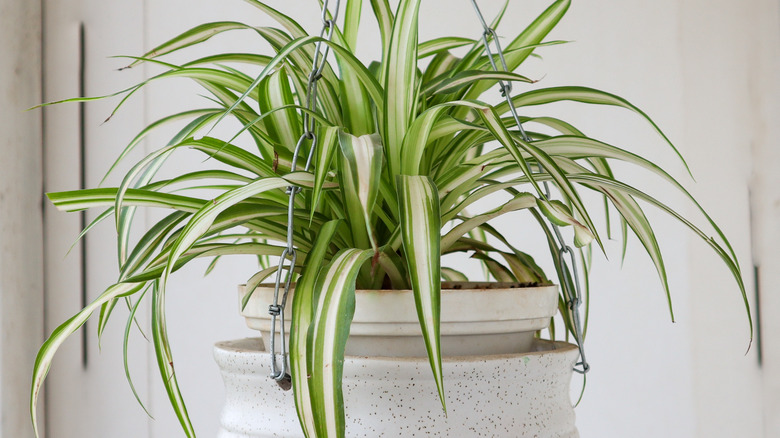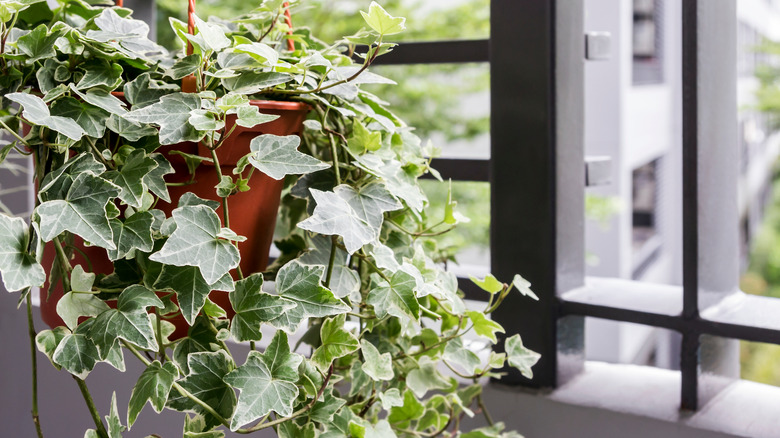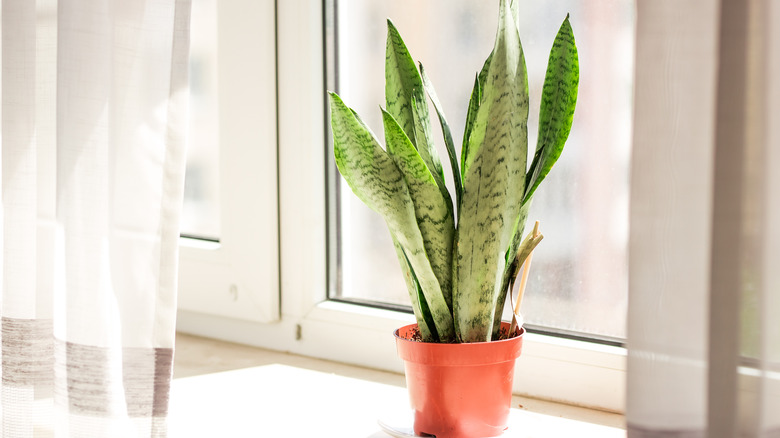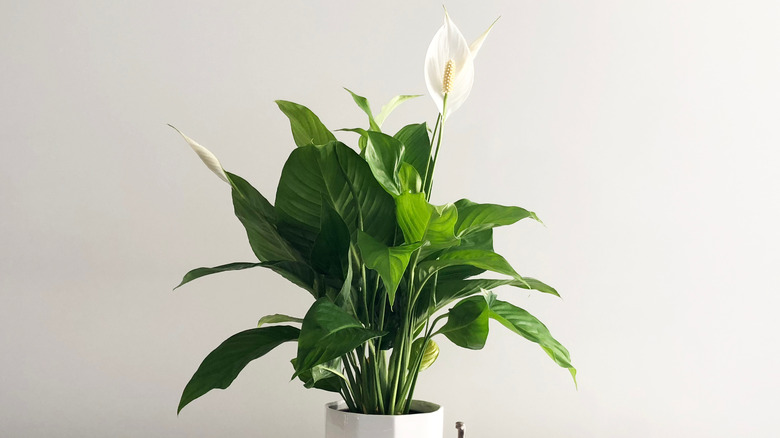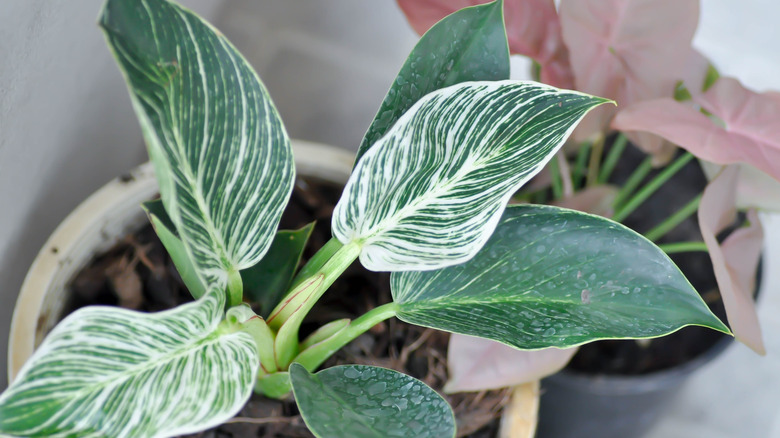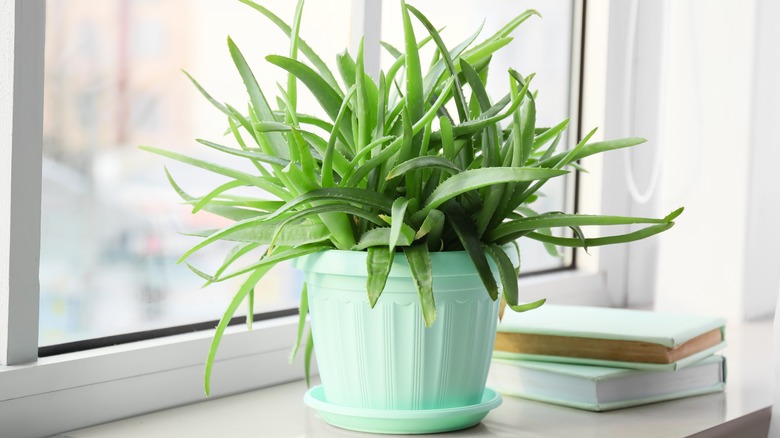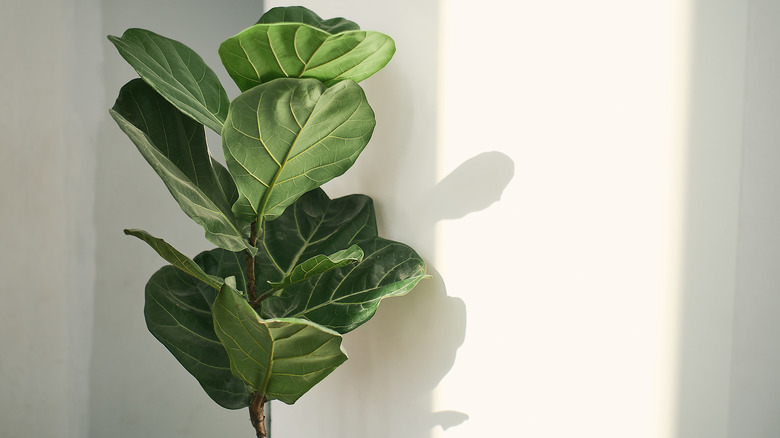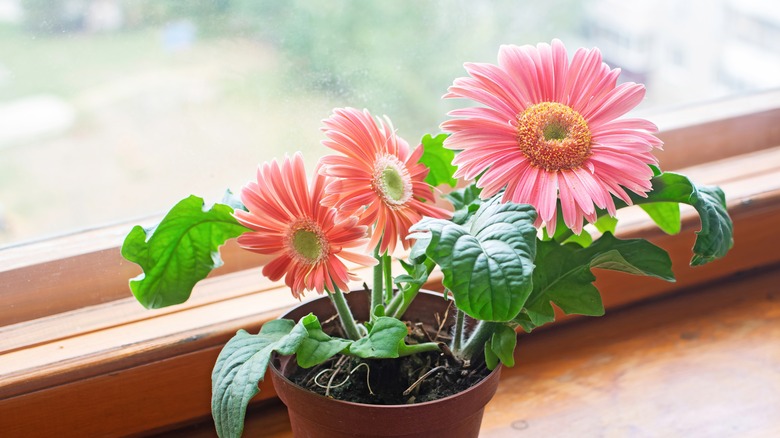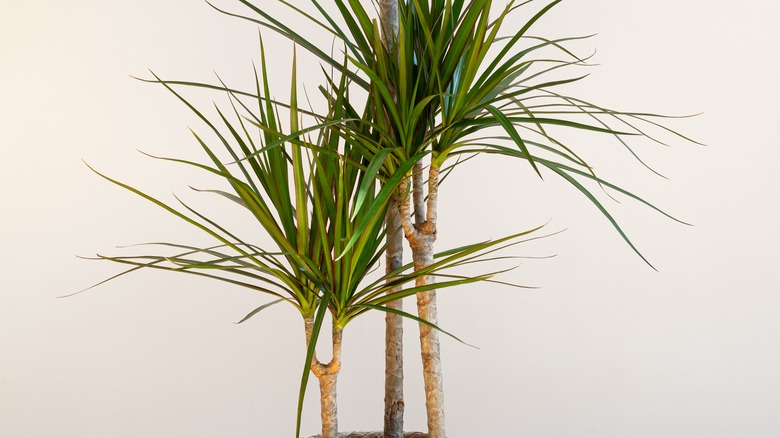Alliance Images/Shutterstock
When thinking of air quality, many people immediately think of the outdoors. Smoke and smog, plus allergens from trees, plants, and flowers, can make being outside miserable for some people. Though being inside may offer solace, some allergens and irritants can make their way in.
Your indoor air quality is just as important to create a healthy environment. While you can bring the outside air inside when you open a door or window, the inside has its own allergens like dust, mold, and pet dander, according to the Asthma and Allergy Foundation of America. Exposure to poor indoor air quality can lead to respiratory and heart diseases, according to the National Institute of Environmental Health Sciences, as well as cognitive deficits and cancer.
One of the ways you can combat poor indoor air quality is with plants. There are many plants that remove harmful gases from the air and use them to photosynthesize. In an exclusive interview with House Digest, Liz Will, a master gardener, certified garden coach, and founder of Learn to Grow Gardens, shares the houseplants that can improve indoor air quality.
Spider plant
Coplay/Shutterstock
Spider plants are a great go-to for beginner plant parents. They’re hardy plants that appreciate bright indirect light and moderate watering. “Not only are spider plants easy to care for, they’re excellent at removing chemicals such as formaldehyde, benzene, xylene, and carbon monoxide,” says Liz Will. “Spider plants have been known to remove 95% of chemicals from the air in as little as 24 hours.” The plant also creates offshoots or identical offspring, so you can have multiple spider plants.
English ivy
ArtBackground/Shutterstock
You’ve probably seen English ivy climbing up the sides of homes and trees. But this beautiful plant can thrive indoors as well. “English ivy grows well in both bright and low light rooms, and they improve indoor air by removing benzene,” Liz Will says. “A study by NASA found English ivy removed 89.8% of benzene in just 24 hours.” A trellis can help ivy climb without potential damage to your home décor.
Snake plant
ArtCreationsDesignPhoto/Shutterstock
There are about 70 varieties of snake plants that range in color, size, and patterns. “The snake plant, or Sansevieria, is an easy to grow indoor air purifier,” Liz Will explains. “Not only does it remove things like formaldehyde and xylene from the air, it’s also one of the highest producers of oxygen compared to most indoor plants.” Sansevierias thrive in both low light and bright indirect light, which allows them to be a great accent in any room.
Peace Lily
R Coates/Shutterstock
Peace Lilies are known for their lush green foliage and white blooms, which are actually modified leaves known as bracts. While peace lilies are known to be dramatic houseplants, they also offer beautiful accents to a room. “Although the Peace Lily removes common pollutants from the air,” says Liz Will, “such as carbon monoxide and formaldehyde, it also removes mold spores. The Peace Lily absorbs them into its leaves and uses them for food.” Peace Lilies also love humidity, so placing them in a bathroom or kitchen can create an ideal environment.
Philodendron
Job Narinnate/Shutterstock
Philodendron varieties are loved by house plant enthusiasts for their ease of care and beautiful foliage. With over 450 varieties, it’s one of the most popular tropical plants. “Philodendron are effective at removing formaldehyde from the air and emitting oxygen,” Liz Will explains. “Keep the dark green leaves free from dust to help the plant absorb the most indoor pollutants.” With an easygoing nature, you can place a philodendron in nearly any room in the house.
Aloe Vera
Pixel-Shot/Shutterstock
Many use aloe as a relief from sunscreen and skin irritation. But the plant can also benefit your health in its fully planted form. “Aloe Vera is a common indoor succulent due to its easy care and healing properties,” says Liz Will. “Aloe Vera is also a great indoor air purifier, removing harmful VOCs and replacing them with oxygen.” VOCs are volatile organic compounds, which are chemicals often found in household products.
Parlor palm
New Africa/Shutterstock
The tropical foliage of the parlor palm makes it a favorite for those looking to add a unique houseplant to their space. This plant is one of the easier palms to grow and is great for anyone just starting a houseplant collection. But the parlor palm also has plenty of health benefits. According to Liz Will, “The Parlor palm removes carbon monoxide, formaldehyde, and benzene from the air, and is a great option for a low-maintenance indoor plant.” With good indirect light and moderate water, you’ll have lush foliage and cleaner air.
Ficus
Yaoinlove/Shutterstock
Ficus make up another plant category with plenty of variety. They are favorites of houseplant lovers for their unique foliage with distinctive shapes and colors. Liz Will also explains their benefits to indoor air quality. “Ficus are great at removing formaldehyde, xylene, and toluene, which can pollute the air as a result of painting and remodeling.” If you need to refresh your home after some interior work, fiddle leaf figs and rubber trees are among the most popular varieties.
Gerbera daisy
Andrei Lavr/Shutterstock
Flower lovers will enjoy knowing that some of their favorite blooms can also help indoor air quality. “Gerbera Daisies clean and purify the air, and release oxygen,” says Liz Will. “They remove trichloroethylene and benzene, and increase oxygen while you sleep. Keep one on your nightstand for a healthier night’s sleep.” With bright red, orange, yellow, and pink varieties, Gerbera daisies can also add a pretty pop of color to the room.
Dracaena
CoinUp/Shutterstock
Dracaena plants are popular for their tropical greenery. Growing tall and upright, they can look stunning in a space. But they also have benefits to indoor air quality. “Dracaena are known to absorb formaldehyde, benzene, trichloroethylene, and carbon dioxide,” Liz Will explains. “They are especially good at removing formaldehyde, which finds its way into our homes from paint, foam insulation, pressed-wood products and smoking.”
[ad_2]
Originally Appeared Here
